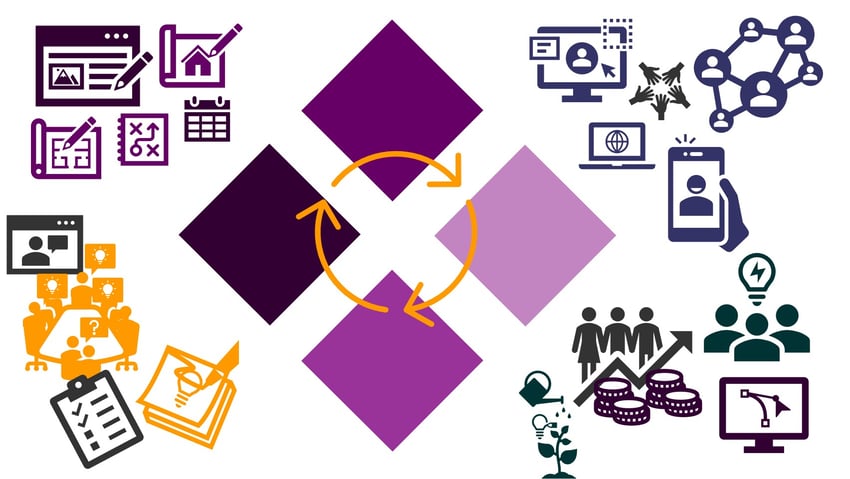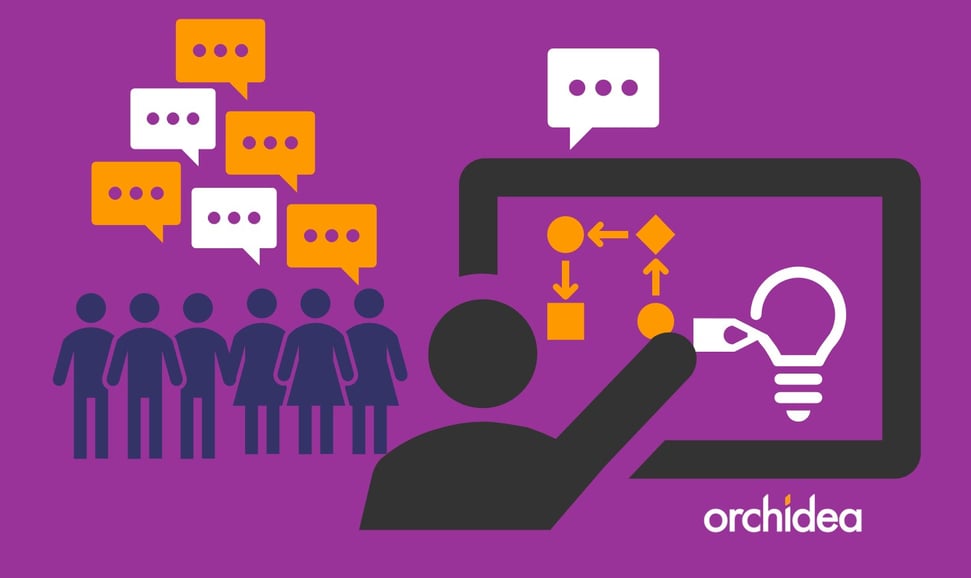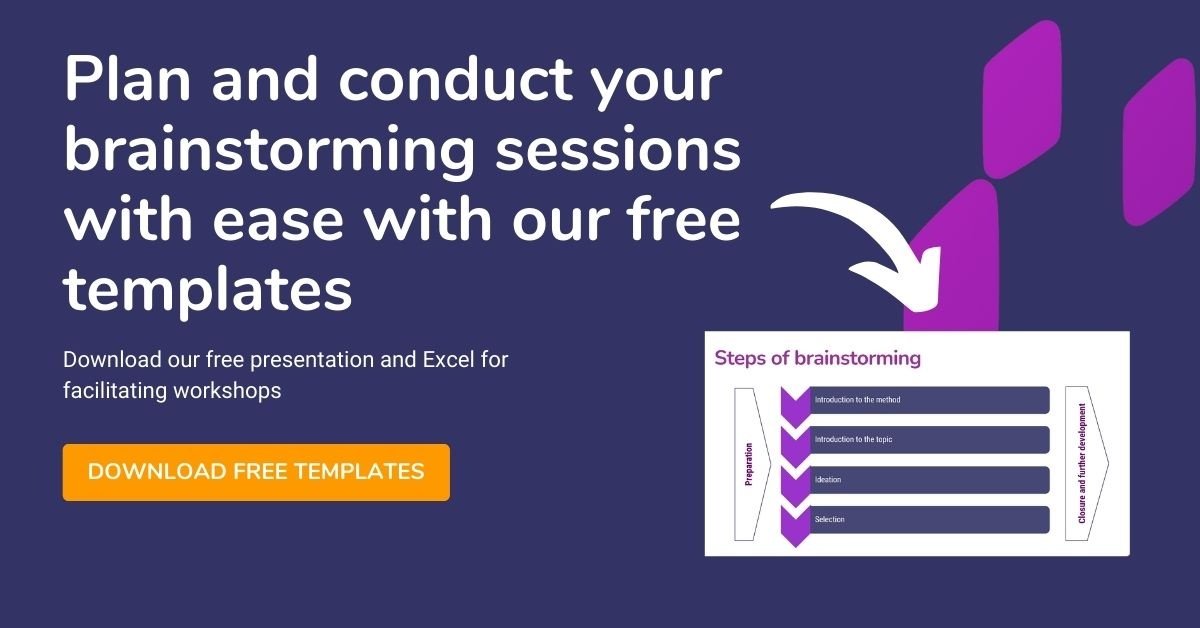Ideation is critical for innovation. And when it comes to rapid ideation, nothing works better than brainstorming. The most innovative companies depend on a healthy flow of new ideas to push their innovation efforts. If you will unlock higher creativity and innovation in your enterprise, you must also be able to encourage a steady flow of ideas to tackle unique problems.
A brainstorming session is a tool that allows you quickly find plenty of ideas or solutions to a problem. The ideas generated are not required to be the best or even have the highest chances of execution. The goal of the session is to find plenty of ideas, which will then usually form a basis for even better solutions.

While brainstorming works best unhindered, it is also most effective when guided by simple brainstorming rules that help you make the most of the process. Here are some rules that can help you squeeze real value out of your brainstorming session.
#1: Start early
Often, brainstorming sessions start by gathering team members in a room where everyone starts the ideation process. But this might not always be the best way to start the process. Beginning this way might compromise the free flow of ideas, as people often have a tendency to follow the thought lines of more vocal, popular, or strong-willed members of the group.
To avoid this unintended groupthink, have your team members start thinking early on their own. As the author, Richard Wiseman, says in his book 59 Seconds: Think a Little, Change a Lot, “people are more creative away from the crowd.” Give your team members a chance to get their creative juices flowing early, and you will be rewarded with more original ideas to get you started.
#2: Think outside the box
Most organizations have set processes, conventions, or ideologies. While this contributes to the creation of a definite identity and culture, it can be debilitating in a brainstorming session. Rather than stick to a specific mold of what your organization considers an “acceptable” idea, instead, send your team members down multiple creative pathways and see what they turn up.

Do not put limitations on the brainstorming session or restrict people in where their thought processes can go. The farther out of the field you allow your thoughts to roam, the fresher and more original your ideas will be. Although some of the ideas you turn up may feel wild or outrageous, keep them coming in. As the folks at IDEO say, “there’s often not a whole lot of difference between outrageous and brilliant.”
#3: Encourage quantity over quality
Rapid ideation involves cranking out multiple ideas within a short period of time. The goal is not necessarily to find the next big breakthrough (that will come later in the process) but to churn out as many ideas as possible. Fussing over the quality, freshness, or any other features of the ideas you generate will frustrate this goal and limit your brainstorming.
How many ideas exactly should you be aiming for? Quite simply as many as possible. IDEO recommends that the average 60-minute session should generate 100 or more ideas. This is a good quantity to aim for, especially if you are looking to maximize the time you spend brainstorming.
#4: Don’t discard ideas
In most meetings, it is natural, and often best, to take notes. This should be the same for brainstorming. Ideally, a member of the team should have the job of recording the ideas as they are being generated. You might be able to take advantage of software solutions that let the whole team see the ideas as they are being recorded. This lets team members see the notes as they are being recorded, and pitch in if it looks like anything was left out.
But just as important is ensuring every single idea gets recorded. You may be tempted to dismiss certain ideas out of hand for not making sense or being unrealistic. Resist this temptation. Even ideas that seem like the worst of the bunch can hold kernels that will help solve the problem you’re facing. Record every single idea.
#5: Stay on track
Giving every idea attention does not necessarily mean allowing your team to drift off-topic. As you ideate, there will often be tracks of thought that will look inviting and may even draw attention. Do not allow this drift to continue, even if the new track addresses an issue on the agenda. Going off track may disperse your energies too early or cause your team to run out of steam prematurely.

If the new track is important to another problem on the agenda, have a team member note it, then lead the team back on-topic.
#6: Involve everyone
All teams have superstars who usually have the best ideas or the most experience. Naturally, you will want these individuals to have their say, bearing in mind that their input will produce a significant amount of value for the conversation. However, you should ensure that their input does not overshadow input from others.

At this brainstorming stage, the quantity of ideas is paramount, and you won’t generate much quantity if only a few people are contributing. A good way to ensure everyone is involved is to begin by asking each team member to provide their input at the start of the meeting. This gives everyone space to contribute and crucially provides a solid, diverse base of ideas to build on.
#7: Put a hold on judgment
The most creative spaces are those that are free of judgment or instant takes on ideas. To get the creative juices flowing, and keep them flowing, your brainstorming sessions need to hold back on the judgment and just let ideas pile up. There will be enough time to evaluate these ideas later on as you move further in the ideation process. But while brainstorming, just let the ideas flow.
This can also be important to get certain team members really involved in the process. Some people tend to feel a bit insecure in putting their thought processes out there or voicing ideas, especially those they feel are outlandish. The best way to ensure everyone can share their ideas is to put off judgment till much later.
#8: Be visual
Ideas are easier to interact with when you visualize them. Often, it is better to show rather than tell. This lets everyone immerse themselves in the ideas and engage with the core propositions in a way that leads to better ideation.
Use sticky notes, whiteboards, or Post-its to explain how an idea works, or just stick it up on a wall so everyone can really see where the idea is going.

#9: Have more than one session
Finally, it is important to create the right conditions to keep creative juices flowing, even after the brainstorming session. Sometimes, the ideas you have shared in the meeting may spark other ideas after the session. Leave a period of time (maybe one week) for everyone to take a few moments and just stew on the ideas shared in the meeting. You may find that new ideas might feed off the ones shared earlier, giving you new and interesting angles to pursue.
Brainstorming is an important part of the innovation process, allowing you to find new ways to tackle evolving problems, and even pulling your team together on a shared goal. Planning your session around these brainstorming rules will lead to more engaged ideation and a more effective session overall.
Are you looking for a better way to conduct productive and easy-to-facilitate brainstorming sessions? Get started for free, and run AI-powered brainstorming sessions with ease with Orchidea.




.jpg)
.jpg)
